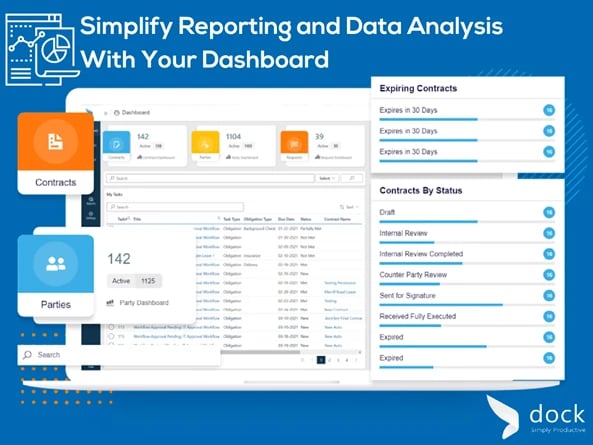
Healthcare Contract Management: An All-Inclusive Guide For 2025
Content
- What is contract management in healthcare?
- What are the different types of healthcare contracts?
- Provider agreements
- Employment contracts
- Vendor contracts
- Purchased Services contracts
- Equipment-lease contracts
- Patient care contracts
- Technology licensing contracts
- What are the challenges faced in managing healthcare contracts?
- What are the strategies for successful healthcare contract management?
- Centralized contract repository
- Standardized contract templates
- Streamlined negotiation and approval processes
- Contract performance monitoring and reporting
- Contract renewal and termination management
- Electronic signatures
- Artificial intelligence
- Link Contract to Policies and Procedures
- Conclusion
The healthcare industry requires flawless contracts with its staff, patients, and vendors to maintain the highest level of service. Every transaction in the medical field relies on these intricate and challenging agreements to protect all parties involved. As such, any breach in managing these contracts may expose the organization to unthinkable financial, operational, and legal risks. For instance, handling payer contracts involving healthcare organizations and payer entities is critical to a company's revenue cycle.
That’s why we need an efficient solution to mitigate risks and ensure compliance without raising administrative costs. Thanks to the latest technology and automation, there are tools to streamline every step of the process. This blog will cover all you need to know to make healthcare contract administration painless in 2025.
What is contract management in healthcare?
Contract management in healthcare involves overseeing the contract lifecycle, from requests to negotiations to signing to managing. It enables medical facilities to ensure compliance, performance, and regulatory requirements. The following steps are involved in managing healthcare contracts:
- The first step is drafting accurate and high-quality contractual agreements outlining the obligations, rights, and unique needs of involved parties.
- Secondly, negotiate the terms and conditions on payment rates, services covered, and other relevant aspects with contracting parties.
- Once the negotiations are complete, it is crucial to thoroughly review and approve the contract to ensure that all the agreed-upon terms are accurate.
- Organizations can execute the healthcare agreement by getting the involved parties to sign it.
- The next step involves ongoing monitoring and compliance with the terms. It includes tracking performance metrics, ensuring timely payments, and addressing any issues or discrepancies that may arise.
- Lastly, keep an eye on the contract renewal and expiration dates so that you can promptly determine whether to extend or terminate them.
Adopting an all-encompassing solution to manage contracts can reduce the complexities of procurement, hiring, leasing, and insurance in the healthcare sector. Thus, organizations can always guarantee quality, legality, and profitability without incurring additional risks or costs.
What are the different types of healthcare contracts?
Healthcare contracts delineate the obligations, privileges, and rights of personnel, suppliers, and clients associated with the establishment. There are different healthcare contracts, each with a distinct objective, such as purchasing medical equipment to ensure patient privacy.
Provider agreements
Provider agreements play a crucial role in healthcare. They establish a contractual relationship between healthcare providers and a payor. They outline the terms and conditions of reimbursement for services provided. The payor can be an individual or an insurance company. These agreements ensure that healthcare providers receive payment and outline the specific services. Provider agreements also help regulate costs and ensure patients receive appropriate and necessary care.
Additionally, these agreements help to streamline administrative processes, facilitating the smooth flow of information and communication between healthcare providers and payors. Overall, provider agreements are essential in ensuring the effective delivery of healthcare services and maintaining the financial stability of healthcare providers.
Employment contracts
These agreements are between healthcare professionals and their employers. They outline the terms and conditions of employment, including job responsibilities, work hours, compensation, and benefits. They serve as a legally binding document that protects the rights and interests of both parties involved.
Employment contracts provide clarity and transparency. They ensure that healthcare professionals understand their roles and expectations, while employers can clearly define the terms of employment. These contracts help establish a mutually beneficial relationship between healthcare professionals and organizations, promoting a stable and productive work environment.
Vendor contracts
These agreements are between healthcare providers and vendors who supply goods or services to the healthcare industry. They outline the terms and conditions of the partnership, including pricing, delivery schedules, quality standards, and any additional services or support provided by the vendor.
These contracts are crucial for establishing a clear understanding between the healthcare provider and the vendor, ensuring that both parties align their expectations and responsibilities. Vendor contracts help healthcare providers streamline their supply chain, improve efficiency, and maintain quality standards in the delivery of healthcare services.
Purchased services contracts
Purchased service contracts are between healthcare organizations and external vendors or service providers. They include non-healthcare services, including laundry, food service, and janitorial. These contracts ensure that the business receives high-quality services from external providers at a reasonable cost.
These contracts help healthcare organizations streamline operations and focus on their core functions. They also guarantee the effective management of crucial support services, such as IT support, marketing services, or facility maintenance. Overall, they optimize the delivery of healthcare services and enhance the overall patient experience.
Equipment-lease contract
Equipment lease contracts are agreements between healthcare providers and equipment leasing companies. These contracts allow businesses to lease medical equipment instead of purchasing it outright. It helps healthcare providers manage their cash flow more effectively by spreading the cost of equipment over time.
Secondly, leasing allows healthcare providers to access the latest and most advanced equipment without massive upfront investments. Lastly, these contracts often include maintenance services, ensuring leased equipment is always in good working condition. Overall, equipment lease contracts provide healthcare providers with flexibility, cost-effectiveness, and access to state-of-the-art equipment.
Patient Care Contracts
A patient care contract is a formal agreement that outlines the services provided, payment, responsibilities, communication, and dispute resolution between the patient and the healthcare provider. Patient care contracts make sure that the needs and rights of both the patient and healthcare provider are met while establishing clear terms of care.
The rapid digital change taking place in the healthcare sector has increased the number of patient care contracts to manage sensitive patient information.
A comprehensive overview of the services provided, a detailed breakdown of expenses and payment options, insurance coverage, and the parties' preferred contact channels are all included to guarantee a smooth course of treatment.
The responsibilities of the healthcare provider, such as maintenance of patient records, and responsibilities for the patient such as adhering to the treatment plan as prescribed are included as well, ensuring informed consent.
Technology Licensing Contracts
Modern healthcare organizations possess some of the most sophisticated and advanced technologies from medical devices to cutting-edge software solutions. To facilitate the process of granting permission to use healthcare technologies, licensee's patents, copyrights, or intellectual property, the healthcare provider enters into a technology licensing contract.
These legal agreements outline confidentiality clauses, ownership, compliance with laws and standards, and protection of sensitive information and intellectual property. Healthcare organizations partner with experienced IP lawyers to navigate intellectual property legalities.
These legal license agreements include intricate terms and conditions. Healthcare providers use contract lifecycle management solutions to utilize the full potential of technology licensing contracts.
What are the challenges in managing healthcare contracts?
As the healthcare industry continues to evolve, so does the complexity of managing contracts. Healthcare providers, insurance companies, and suppliers rely on contracts to ensure smooth operations, compliance, and financial stability. However, healthcare contract management comes with its fair share of challenges.
Manual contract processes
One of the most significant challenges in healthcare contract management is the reliance on manual processes. Many healthcare organizations use paper-based systems or outdated software to manage their contracts. It can lead to inefficiencies, errors, and delays, increasing the risk of non-compliance and financial loss.
Lack of visibility and control
In healthcare contract management, it is crucial to have real-time visibility into contract status, obligations, and performance. However, many organizations struggle with a lack of centralized data and a fragmented view of their contracts. As a result, they find it challenging to keep tabs on crucial contract milestones, evaluate employee performance, and recognize possible hazards.
Changing regulations
One of the biggest hurdles in healthcare contract management is the constant changes in regulations. With the regular introduction of new laws and policies, healthcare organizations must ensure that their contracts comply with the latest requirements. Failure to do so can result in financial penalties, legal disputes, and damage to the organization's reputation.
Lack of standardization
Another significant challenge in healthcare contract management is the lack of standardization across contracts. Each healthcare organization may have unique contract templates, clauses, and approval processes. This lack of standardization can lead to inefficiencies, errors, and inconsistencies in contract management.
Multiple Stakeholders
Healthcare contracts typically involve various stakeholders, including healthcare providers, insurance companies, and government agencies, which can complicate communication and decision-making processes. Collaborating with these stakeholders to draft, negotiate, review, and sign healthcare contracts can be challenging and prone to errors.
What are the strategies for healthcare contract management?
In the fast-paced world of healthcare, effective contract management is crucial for ensuring smooth operations and maintaining compliance. It helps organizations streamline processes, minimize risks, and maximize financial benefits. So, how can healthcare providers effectively manage their contracts? Here are a few strategies and technologies that can lead to successful contract management.
Centralized contract repository
First, establish a centralized contract repository. It serves as a single source of truth for all contracts. Thus, organizations can easily access and manage contract-related information. For instance, Dock’s digital repository makes healthcare contracts accessible, searchable, and secure within Office 365 and SharePoint environments. It eliminates the need for manual searching through piles of paperwork, reducing the risk of contract mismanagement or loss. A centralized contract repository enables healthcare organizations to track key contract dates and milestones, such as renewal dates, termination clauses, and performance obligations.
Standardized contract templates
Healthcare organizations can streamline the contract creation process and ensure consistency across all contracts by creating standardized templates. They also help to establish compliance with regulatory requirements and industry standards.
When creating contract templates, organizations must include all necessary clauses, such as payment terms, confidentiality provisions, termination clauses, and dispute resolution mechanisms. By having well-defined contract templates, healthcare providers can save time and reduce errors or omissions. Dock contract management software facilitates the creation and digital library storage of pre-approved templates and clauses. Thus, users don’t have to create contracts from scratch every time and ensure consistency across the board.
Streamlined negotiation and approval processes
One of the primary challenges in healthcare contract management is the lengthy and complicated negotiation process. To expedite this process, healthcare organizations should consider establishing clear lines of communication between legal counsel and relevant stakeholders. Regular meetings and status updates can help identify and address any issues or concerns.
Dock contract management software enables users to automate the contract lifecycle process. The Word plug-in enables multiple stakeholders to negotiate, comment, and track changes within a single platform. It offers custom workflows to streamline tasks such as document creation, approvals, and signatures, reducing the risk of errors and delays.
Contract performance monitoring and reporting
Healthcare contracts without adequate oversight run the risk of revenue leakage, noncompliance, and poor patient outcomes. Hence, organizations must track the terms and conditions to ensure all parties uphold them. It includes verifying services, reimbursement rates, and quality standards of goods or services. Businesses must also analyze payment accuracy, identify underpayments, and address billing issues. They can track key performance indicators (KPIs) such as readmission rates, patient outcomes, and adherence to clinical guidelines to ensure patient safety and satisfaction.
Dock’s contract management software provides advanced monitoring and reporting capabilities for users to stay on top of healthcare contracts throughout their lifecycle. They can track KPIs to assess performance and compliance. Businesses can filter and find the exact data on contract value, risks, deadlines, and vendors to create custom reports and dashboards.

Contract renewal and termination management
Healthcare facilities might need to extend an existing agreement with a vendor, supplier, or service provider. It aids in guaranteeing that businesses have access to a steady supply of IT services, personnel, insurance, and medical supplies. Staying on top of contract renewals enables healthcare facilities to carefully evaluate and negotiate contract terms that meet the needs of both parties.
It involves reviewing the terms and conditions of existing contracts, analyzing the financial impact, and negotiating any necessary changes or updates. Dock‘s contract management software provides real-time alerts on contract renewal and expiration dates. Thus, both parties have time to ensure they have a mutually beneficial relationship while meeting the needs of patients and maintaining quality care. If not, organizations can terminate the non-beneficial agreement.
Electronic signatures
An electronic signature solution simplifies the contract management process for healthcare organizations. It eliminates the need for printing, signing, and scanning documents, saving time and reducing the administrative burden. They provide a higher level of security than traditional paper-based signing and ensure the integrity and authenticity of healthcare contracts.
They can help ensure compliance and adherence to regulatory requirements, such as HIPAA, by providing an auditable trail of signatures and document access. It is a valuable tool for healthcare organizations looking to modernize their contract management practices. Businesses can experience the security of electronic signatures such as Adobe Sign, DocuSign, and Sertifi within Dock contract management software.
Artificial intelligence
Traditionally, healthcare contract management has been a time-consuming and error-prone task. The vast volume of contracts, complex terms and conditions, and frequent changes make it challenging for contract managers to stay on top of the process. Artificial intelligence can automate and streamline the contract management process, reducing the need for manual data entry and paperwork. They can analyze complex contract language and data to identify patterns, trends, and potential risks. It enables healthcare organizations to make more informed decisions and optimize contract negotiations.
Dock’s contract management software leverages AI and OCR capabilities to automate various aspects of the contract management lifecycle. It enables businesses to generate standardized templates tailored to specific healthcare scenarios. It can also analyze existing contracts and extract key terms and clauses, making contract review and comparison much more efficient.
Link Contract to Policies and Procedures
Connecting important contracts to relevant policies and procedures is another best practice to be followed to guarantee medical contract management software. Hospital contracts are all about regulatory compliance and obeying stringent guidelines concerning security and privacy. Hence, the healthcare industry is forced to uphold several policies and procedures. Moreover, linking them appropriately helps to overcome compliance issues. Ensuring compliance with several regulatory bodies like HIPAA, False Claims and Joint Commission, Stark I, II, III, GLBA, HITECH, and Federal Anti-Kickback Statute is an important matter to be concerned about in every hospital. Moreover, Microsoft Office 365 offers a comprehensive set of compliance offerings to help your business adhere to healthcare industry standards. Therefore, having a successful and appropriate contract in the healthcare sector is practicable by implementing the right healthcare contract management software.
Conclusion
Healthcare contracts are complex and numerous. From vendor agreements and service contracts to managed care contracts and physician agreements, healthcare organizations deal with a wide array of contracts daily. Handling these contracts manually or with outdated systems can lead to errors, missed deadlines, and compliance issues.
Dock’s contract management system leverages Microsoft 365 to streamline the entire healthcare contract lifecycle, from contract creation and negotiation to execution, monitoring, and renewal. By centralizing contract data and automating processes, healthcare organizations can improve operational efficiency.
Schedule a live demo with our experts to explore Dock’s benefits for your business.
Book a Live demo
Schedule a live demo of Dock 365's Contract Management Software instantly.
.png?width=196&height=196&name=MicrosoftTeams-image%20(24).png)
Written by Deepti Gopimohan




